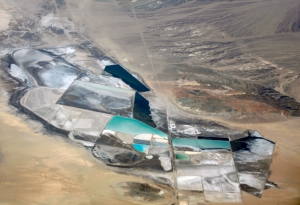
Craig A. Ruark/Special to the Las Vegas Business Press At Konami Gaming, the retrofitted 123,000-square-foot existing building and a 193,000-square-foot addition are pending LEED certification by the USGBC.
Despite the slow economic recovery, many businesses are seeing âgreenâ as the path to a sustainable future and achieving a LEED certification by the U.S. Green Building Council (USGBC) as the Medal of Honor.
Las Vegas is home to 81 LEED-rated office, retail, and industrial buildings ranging from the basic certified level and up to silver, gold, and platinum levels. Of those buildings, 55 were designed specifically for energy and water savings, indoor air quality and other components that are part of the LEED certification criteria.
In addition, 20 of the businesses in the Las Vegas Valley have taken steps to modify existing buildings to attain a LEED certification and reap the benefits achieved in annual energy and water savings, as well as improvements in employee health, productivity and morale.
Here is a short list of some notable green building projects under construction:
• TJ Maxx operates a 300,000-square-foot warehouse and distribution center in North Las Vegas. The facility, completed in 2014, was not originally designed for LEED certification. After an analysis of the economic benefits, alterations were made including energy-efficient lighting, heating, and cooling; water savings features; and enhanced indoor air quality. Following the retrofit, documentation was sent to the USGBC and the building was given a LEED Silver certification under the existing building criteria. Beyond the savings achieved in the operation and maintenance of the building, parent company TJX Cos. Inc. feels going green is the right thing to do for the environment. TJX is adding another 300,000 square feet to the building, this time designed specifically to meet LEED criteria for the new construction category.
• A 1 million-square-foot Levi Strauss distribution center off Executive Airport Drive in Henderson is nearing completion. While the company is awaiting completion of the building before announcing the level of sustainability achieved, the expansion was designed to take advantage of the latest energy and water savings technology, with a goal of meeting LEED certification criteria for the new construction category. The existing building has been updated and is awaiting LEED certification under the existing building criteria.
• The Konami Gaming building can be seen while driving along Sunset Road across from McCarran Airport, but what is not visible is the retrofit that was completed on the original 123,000-square-foot building under the LEED existing building criteria. A 193,000-square-foot expansion is under construction and will seek LEED certification for the new construction category.
• A building need not be massive to reap green benefits. In 2013, Jared Fisher and wife Heather, owners of Las Vegas Cyclery, completed construction on a new building near Town Center Drive and the 215. The Fishers, avid outdoor enthusiasts, achieved a LEED Platinum designation for their building, which uses little water and receives 100 percent of its energy from solar panels mounted on the roof, with energy to spare. The Fishers now are building an 8,300-square-foot retail space across the parking lot from their existing store, with a goal of a LEED gold rating under the USGBC core and shell criteria. The building incorporates most of the same environmentally sustainable elements as the original store, including a rooftop solar system that will provide 40 percent of the building’s power. The Fishers hope to lease half of the new building to a food-oriented tenant that also is sustainability oriented.
• One candidate for the Fishers’ new building might be LYFE Kitchen, which operates a restaurant in Henderson’s The District at Green Valley Ranch. LYFE is in the process of achieving a LEED certification for each of its 12 locations around the country, including Henderson, under the USGBC interior design and construction criteria for retail establishments.
– See more at: http://businesspress.vegas/green-goals-reflected-building-trends#sthash.k47KNkVX.dpuf




